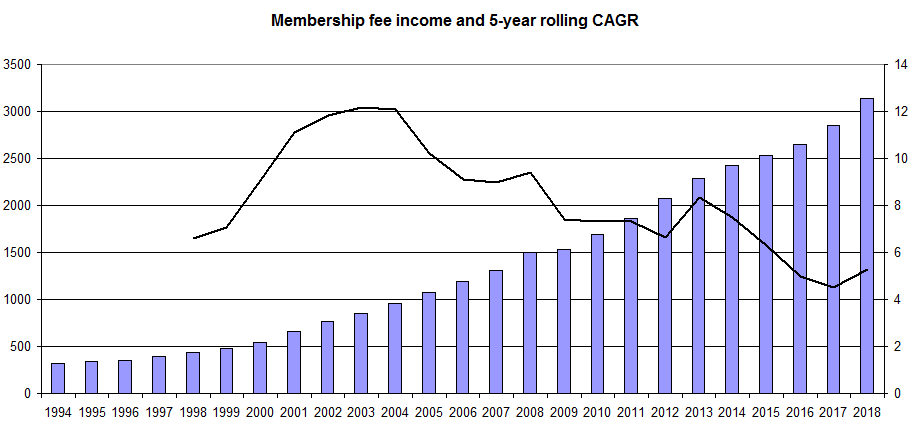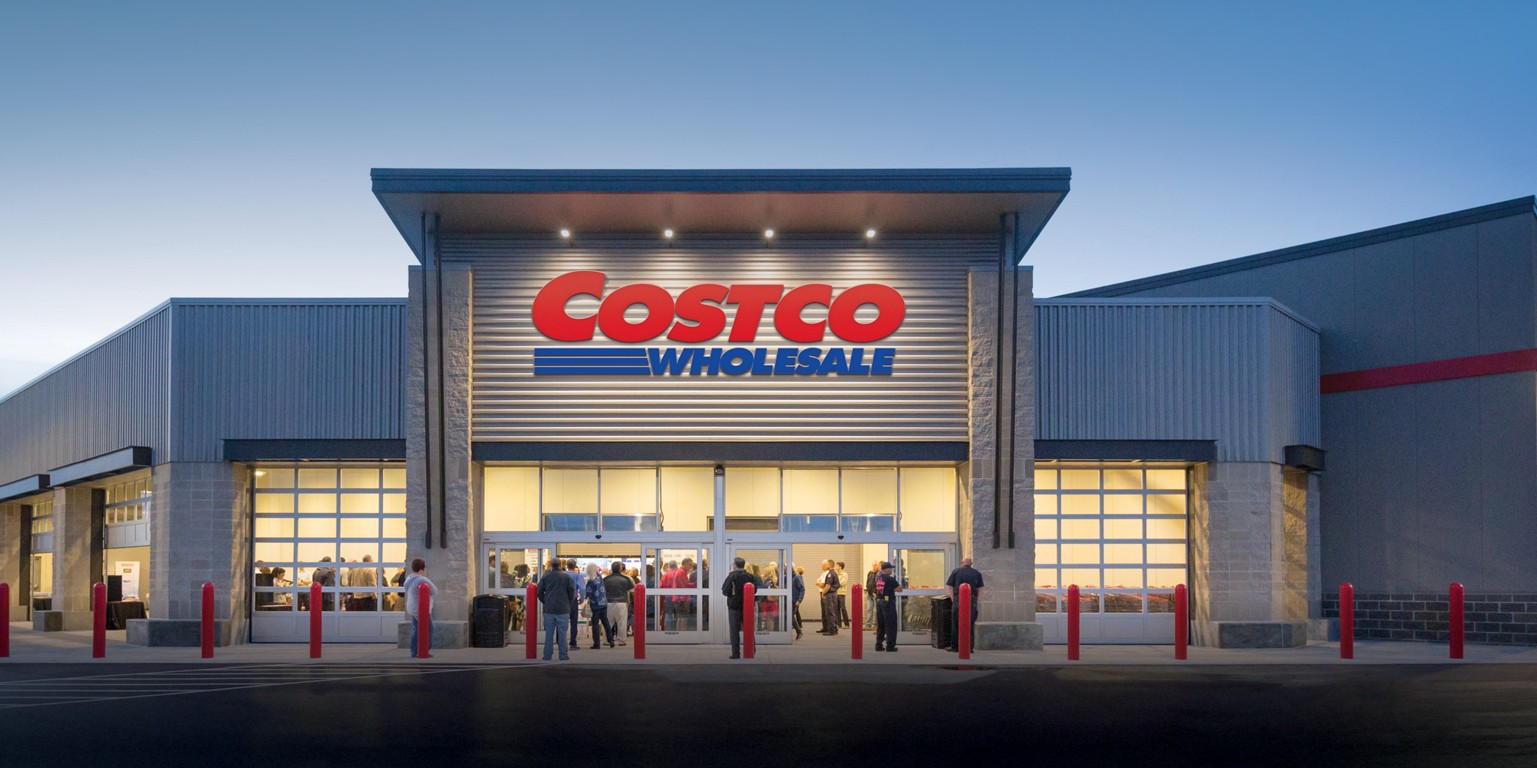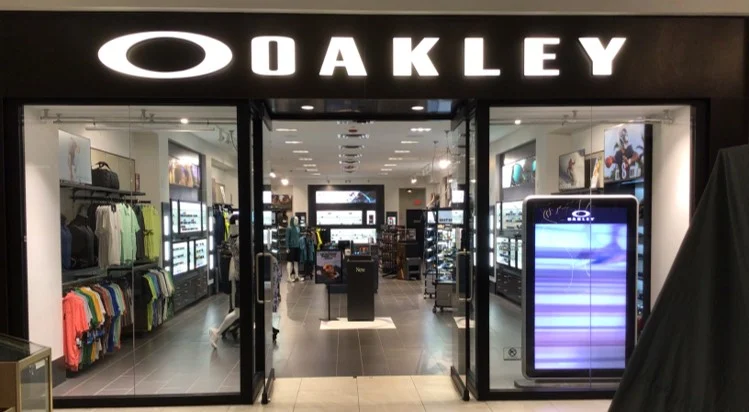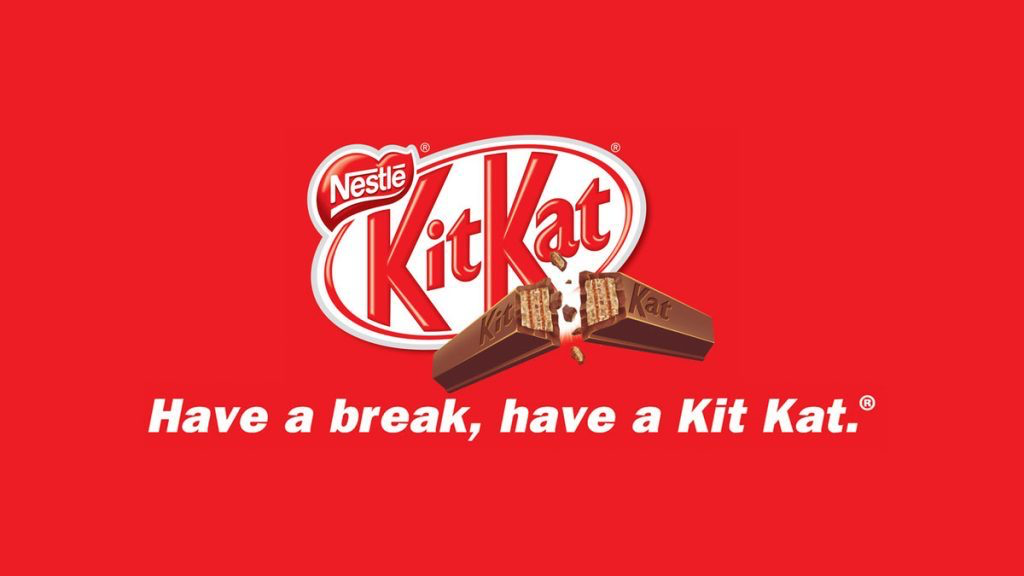Founded in 1976, Costco Wholesale Corporation operates as a wholesale retail club with a distinctive annual membership model which sets it apart from other traditional retailers such as JC Penney and Target. Deriving its revenues from annual membership fees, Costco has been able to compete aggressively on price and has become known for providing a variety of high-quality, nationally available, and private-label merchandise at the lowest prices available in the market. Sales take place either at one of Costco’s 785 warehouse stores globally or online via Costco.com.
Costco sells merchandise across 6 main categories:
• Foods (dry, packaged, groceries)
• Sundries (snacks, beverages, cleaning supplies)
• Hardlines (appliances, electronics, health, etc.)
• Fresh Foods (meat, produce, deli, bakery)
• Softlines (apparel, small appliances)
• Ancillary (gas stations, pharmacy)
The company’s ancillary businesses provide expanded products and services that are designed to
encourage members to visit their stores more frequently. In addition, Costco has been significantly growing its online businesses in recent years which offers customers additional products and services even beyond what is available in its warehouses.
These operations include the e-commerce, business delivery, and travel segments, but at this point availability of each varies by a country outside of the U.S. and Canada. The company currently operates e-commerce websites in all countries except Japan, Australia, Spain, Iceland, and France. As is evident, the company has a truly global footprint with 239 of its 785 stores located outside the U.S. The countries with the largest presence outside of the U.S. are Canada (100), Mexico (39), the U.K. (29), Japan (26), Korea (16), Taiwan (13), Australia (11), Spain (3), Iceland (1), France (1), and China (1). Overall, foreign operations accounted for 27% of FY2020 sales.
Business Model
Costco’s strategy is to provide its members with a broad range of high-quality merchandise while offering prices that are consistently lower than its competitors. In order to accomplish this goal, Costco’s business model places an emphasis on large sales volumes, while costs are managed by bulk purchasing, smart inventory practices, and private-label branding.
First and foremost, Costco’s no-frills warehouse format yields cost efficiencies by requiring bulk purchasing. They limit items to fast-selling models, sizes, and colors and carry an average of approximately 3,800 SKUs per warehouse which is significantly less than other broad-line retailers. Shoppers are able to capitalize on the bulk-buy discounts of retail, while Costco is better able to
leverage volume pricing with suppliers.
Costco also uses smart inventory practices to lower costs further. Costco employs a centralized hub and spoke delivery system between stores to reduce delivery costs. The warehouse-themed stores themselves are also much easier and cheaper to stock and maintain than traditional store shelves. Costco’s limited product selection further reduce excess inventory and unsold goods, while the
company’s strict controls of the entrances and exits help decrease leakage typical of other retail
operations.
Costco has also invested significantly in the development of its private-label brand, Kirkland Signature. As a result, Kirkland has become known for its high quality at prices that are generally lower than those for similar national brand products. This has enabled the company to differentiate its merchandise offerings with the added benefit of further supporting higher margins.
Thus, Costco is positioned to solve key friction for retail consumers between the desire for high quality and an aversion to high costs. This model has proven to be highly popular with customers, who have become renowned for their loyalty; annual renewal rates have averaged at 90% since 2010 despite there being very few hurdles to cancellation and opt-in renewable program. This allows Costco
to weather cyclical downturns far more comfortably than traditional retailers and enabled the stock price to rise at a rate consistently ahead of the S&P 500 index over the long run. That being said, conditions in the retail sector have forced Costco to raise membership fees in 2017 but this has not, as yet, sparked a material decline in renewal rates.
Costco’s largest geographical market undoubtedly remains the United States although the company has an established history of international growth. Price Club, one of two companies that merged to form Costco in 1993, opened its first international warehouse in Mexico City in 1992. Since then, the firm has opened operations in other international markets.
Growth Engines of Costco
The Membership Program
A majority of Costco’s net income comes from its membership fees. There is some market concern that Costco’s membership fee pricing power may not sustain given newfound alternatives (Amazon Prime) and thus renewal rates could suffer. This concern stems from the fact that membership growth is decelerating and the main driver for the current year’s EPS growth was due to a rise in membership fees This concern is overstated for a few reasons.
Costco’s membership program has enjoyed extreme levels of customer loyalty over the years, allowing the retailer to offer products at razor-thin margins and pass through price hikes without protest. Not even the Great Recession could put a dent in Costco’s membership base. Costco’s renewal rates hover around 90%. Costco accomplishes this by sending its “cash back” rewards checks annually to members with their renewable forms. While the renewal process is opt-in, Costco doesn’t forget to remind its customers of the savings their membership brings.
Costco earns their customer loyalty by actually delivering on its promise to deliver high-quality products at the best prices. Even as much of the retail industry struggles to compete with Amazon, Costco continues to remain price competitive, and Costco’s shoppers continue to shop offline to take advantage of these prices.
Costco is also diversifying its revenue mix. While the membership fee continues to represent a large portion of Costco’s earnings, this percentage has steadily decreased over time. This is in large part due to Costco’s push toward its private-label Kirkland brand. Due to its higher margins, Kirkland is increasingly becoming a more important part of Costco’s profits. Further revenue expansion will be realized as Costco expands internationally.
China as a Growth Engine
There is some market concern that Costco’s international expansion will be risky because of different consumer behavior and geopolitical risks such as government intervention and FX exposure. This fear is unwarranted, though, due to Costco’s current success in China and the vastness of the Chinese market.
China’s middle class is the largest in the world and still growing. China’s upper middle class is expected to make up 54% of urban private households by the year 2022. This is an increase from 14% in 2012. This is a great environment for Costco to capitalize on, as the upper-middle class is its core demographic in the U.S.

Costco has already had limited success in China. Domestic retail giants have had mixed results in China as they fail to embrace Chines shopping habits. Costco has already had successful pilot operations in the country, though. In 2014, Costco opened up an online store on TMall Global. Sales greatly exceeded expectations. Costco even set a Guinness World Record for tons of nuts shipped in a day in 2015.
Costco’s international margins are higher than its domestic business. Expansion in China will certainly increase this effect. Chinese consumers have a higher willingness to pay for foreign goods over domestic products. Costco already benefits from this pricing premium on its online Chinese stores. If Costco can just match Walmart’s presence in the country, Costco’s EPS could grow by 12.9%.
Is E-Commerce a Threat or an Opportunity?
The market views that e-Commerce is a structural growth story that is both expanding the pie and stealing share from traditional brick-and-mortar. Costco’s customer base is thus similarly expected to transition towards online purchasing, threatening both the membership value proposition and creating the opportunity for share losses. The major arguments can be classified into the following 3 aspects:
a. Costco vs. Amazon: The two companies attract consumers with similar behavior – customers have proved willing to pay a membership fee to gain access to bargain prices.
Read more about Amazon – Delivering A To Z Of Business And Success
b. Customer Demographics: The largest demographic group of Costco is 65+ years old, who prefer to shop in the traditional way. As the years go by, an increasing number of consumers are likely to adopt e-commerce.
c. Fears in Grocery Area: Competition from Amazon due to the acquisition of Whole Foods Market.
E-commerce is disrupting traditional brick-and-mortar retail, but costs stand to benefit from the transition. The disruptive potential of e-commerce (and, more specifically, Amazon) is a common acknowledgment in the market. The incumbent retailers and their established brick-and-mortar network of stores are the victims of a transition from spending in-person to spending online.
As larger incumbents pivot towards their own e-commerce platforms, demand is increasingly consolidating towards the larger players in the industry; Amazon certainly holds the dominant position, but the company faces retaliation from Wal-Mart, Costco, and the like.
Challenges Galore
Competitive brick and mortar landscape. Big-box retailers like Walmart and Target are improving
their shopping experience and responding to changing consumer preferences by offering different
products, shifting to fresh and organic foods and driving down prices. Additionally, another warehouse
club peers and discount chains continue to expand in North America and put pressure on Costco’s
largest market.
Read about Walmart – Inside The World’s Largest Retailer
E-Commerce Disruption. Intensifying competition from e-retailers such as Amazon and Jet.com
(Walmart subsidiary) pose a risk to the traditional retail model and may weigh on traffic flow over time. Additionally, Amazon’s acquisition of Whole Foods introduces a new avenue of pressure on the brick and mortar retailing. While I believe Costco is positioned well to take advantage of eCommerce, Amazon’s competitive advantage in online retail distribution may be too difficult to match.
Membership Program Economics Deteriorate. Costco’s members are very loyal, but this loyalty could change should Costco fail to be the cheapest provider of products. As alternative programs and distributions channels become more appealing, Costco’s historically robust renewable rates could become in jeopardy. Additionally, Costco’s pattern of membership price hikes every five years or so could face customer adversity in future iterations
Operating Leverage Amplifies Discounting Risk. Costco is operationally very leveraged, in its effort to drive down prices. While prices have fallen across the industry, it has been somewhat insulated due to its lower prices. However, if market prices were to fall below Costco’s lowest offering, then Costco’s financial difficulty will be amplified by its immense operating leverage.
International Expansion Risks. Aside from exposure to foreign exchange risk, geopolitical risks exist
in relation to political or economic instability from a foreign location. Costco could also face difficulty
in adapting to different cultural differences/consumer behaviors. If these hurdles cause international investments to not be profitable, Costco’s larger operation could be threatened due to its thin gross margins.
New Store Opening Cannibalization. Costco has opened over 100 clubs in the last five years and is expected to continue to expand through new store openings. Much like when a competitor opens, new stores can temporarily detract customer traffic and sales from other nearby stores. While unit expansion typically represents a growth opportunity, maturing markets could be at-risk of cannibalization over time.



